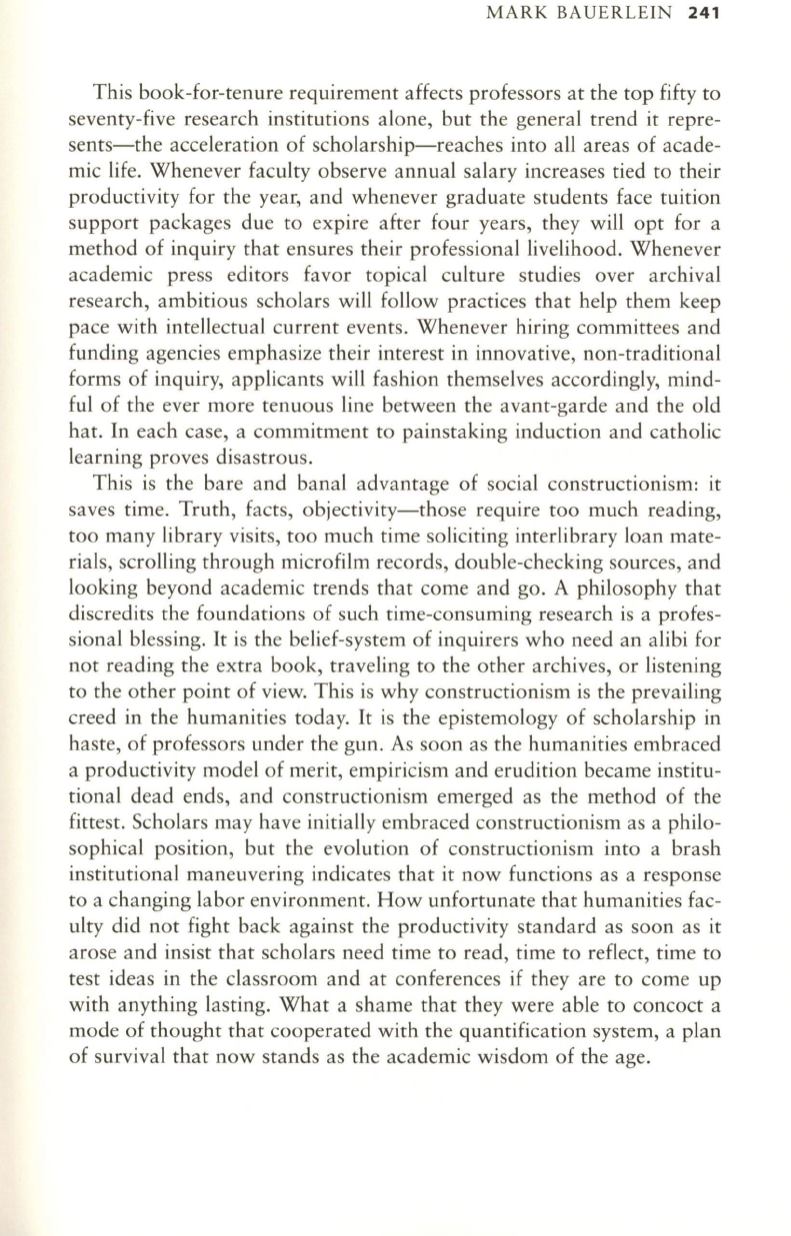
MARK BAUERLEIN
241
This book-for-tenure requirement affects professors at the top fifty to
seventy-five research institutions alone, but the general trend it repre–
sents-the acceleration of scholarship-reaches into all areas of acade–
mic life. Whenever faculty observe annual salary increases tied to their
productivity for the year, and whenever graduate students face tuition
support packages due to expire after four years, they will opt for a
method of inquiry that ensures their professional livelihood. Whenever
academic press editors favor topical culture studies over archival
research, ambitious scholars will follow practices that help them keep
pace with intellectual current events. Whenever hiring committees and
funding agencies emphasize their interest in innovative, non-traditional
forms of inquiry, applicants will fashion themselves accordingly, mind–
ful of the ever more tenuous line between the avant-garde and the old
hat.
In
each case, a commitment to painstaking induction and catholic
learning proves disastrous.
This is the bare and banal advantage of social constructionism: it
saves time. Truth, facts, objectivity-those require too much reading,
too many library visits, too much time soliciting interlibrary loan mate–
rials, scrolling through microfilm records, double-checking sources, and
looking beyond academic trends that come and go. A philosophy that
discredits the foundations of such time-consuming research is a profes–
sional blessing.
It
is the belief-system of inquirers who need an alibi for
not reading the extra book, traveling to the other archives, or listening
to the other point of view. This is why constructionism is the prevailing
creed in the humanities today.
It
is the epistemology of scholarship in
haste, of professors under the gun. As soon as the humanities embraced
a productivity model of merit, empiricism and erudition became institu–
tional dead ends, and constructionism emerged as the method of the
fittest. Scholars may have initially embraced constructionism as a philo–
sophical position, but the evolution of constructionism into a brash
institutional maneuvering indicates that it now functions as a response
to a changing labor environment. How unfortunate that humanities fac–
ulty did not fight back against the productivity standard as soon as it
arose and insist that scholars need time to read, time to reflect, time to
test ideas in the classroom and at conferences if they are to come up
with anything lasting. What a shame that they were able to concoct a
mode of thought that cooperated with the quantification system, a plan
of survival that now stands as the academic wisdom of the age.


